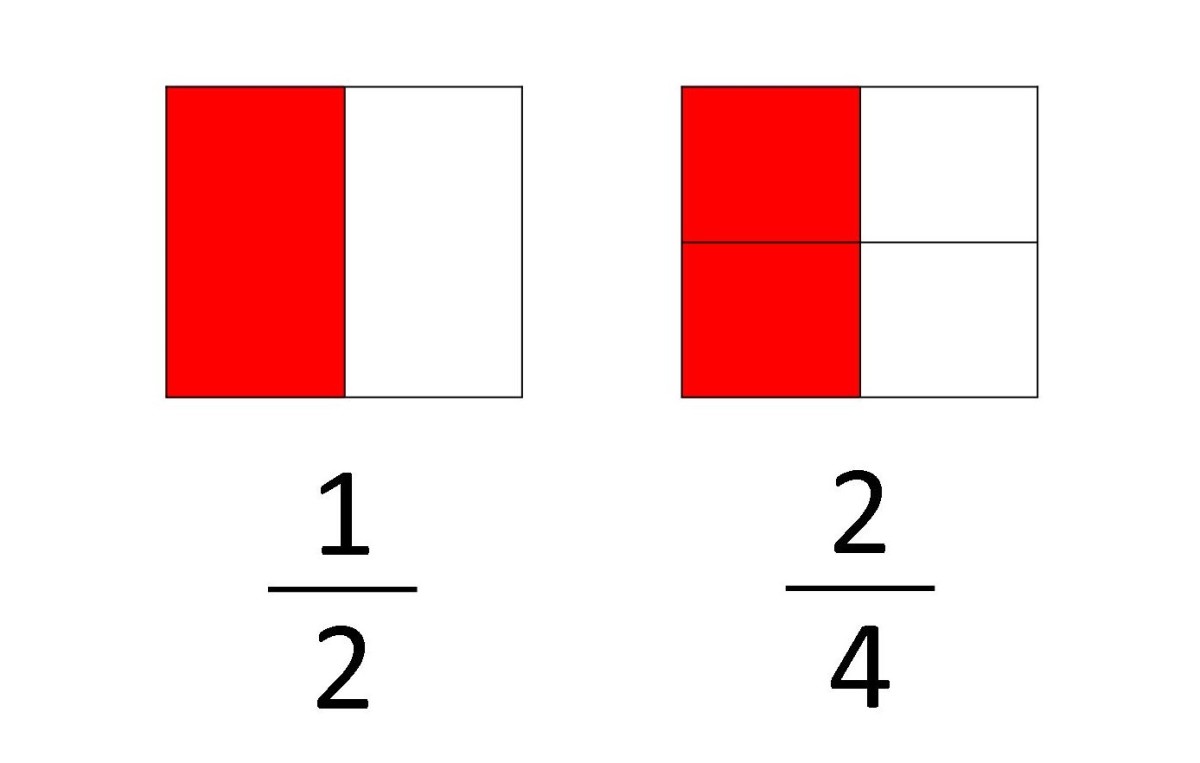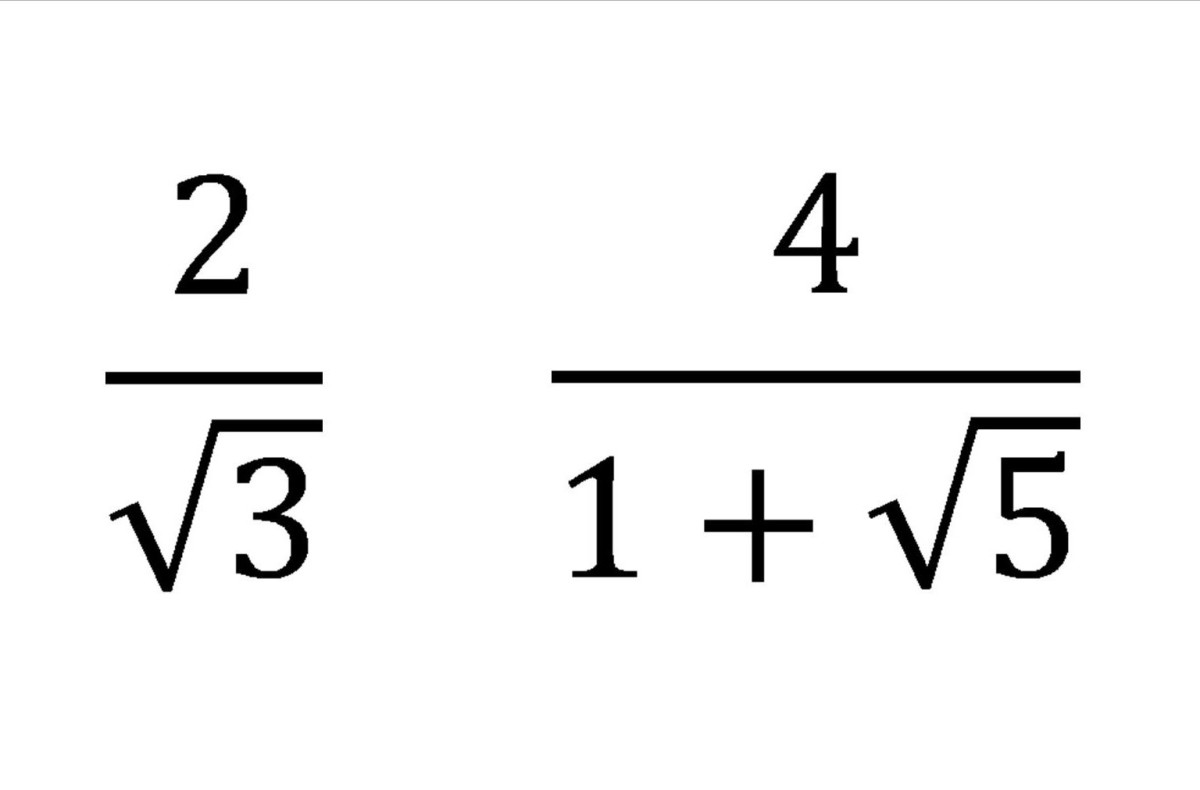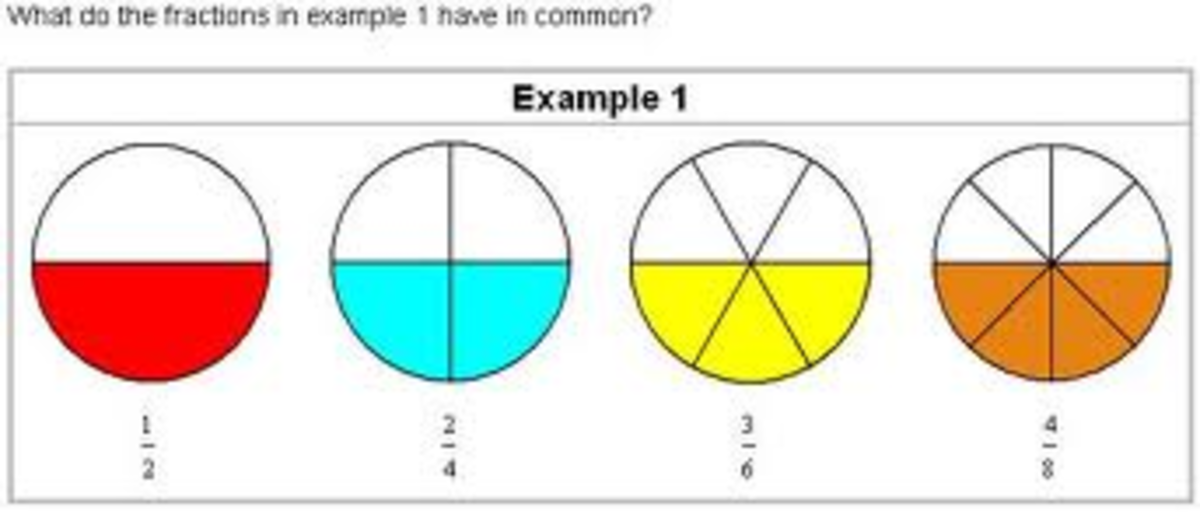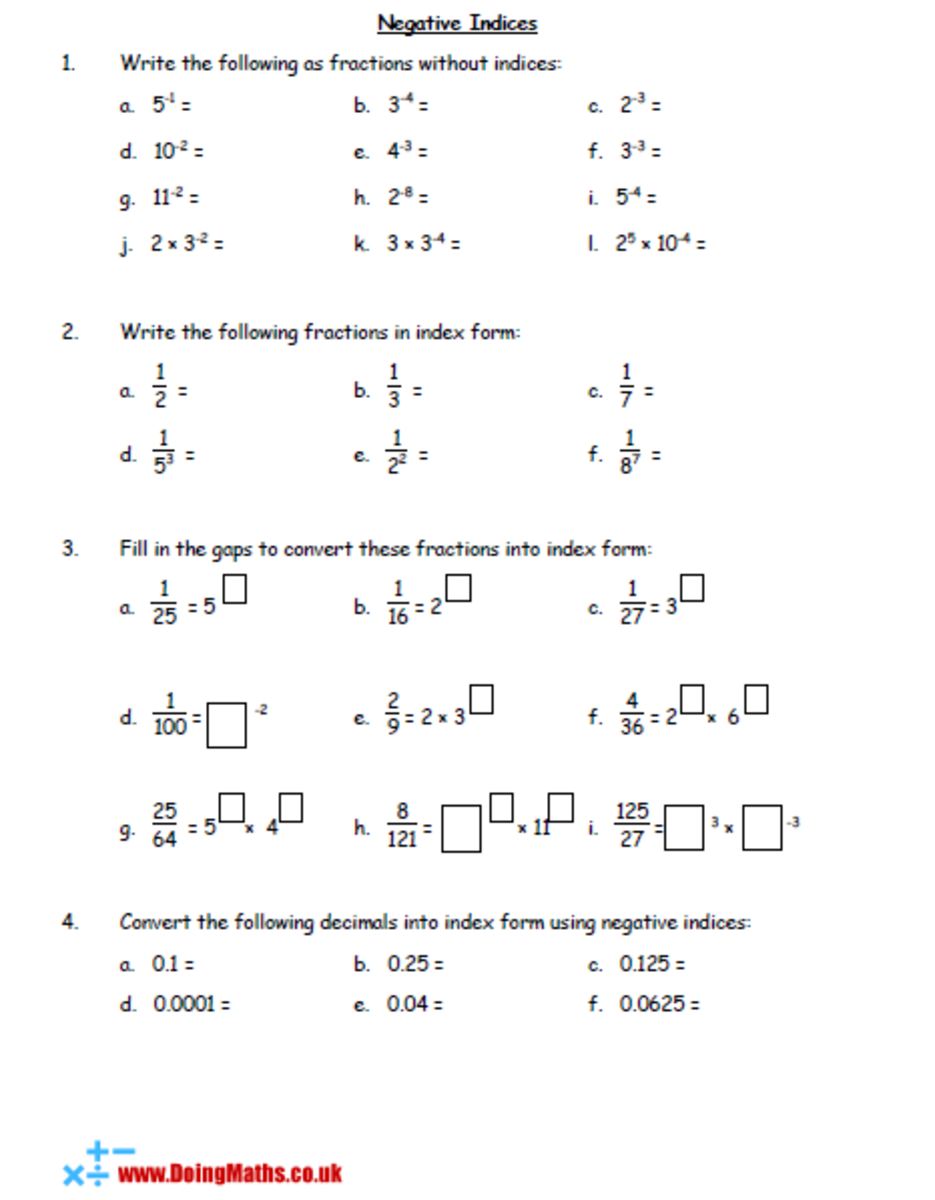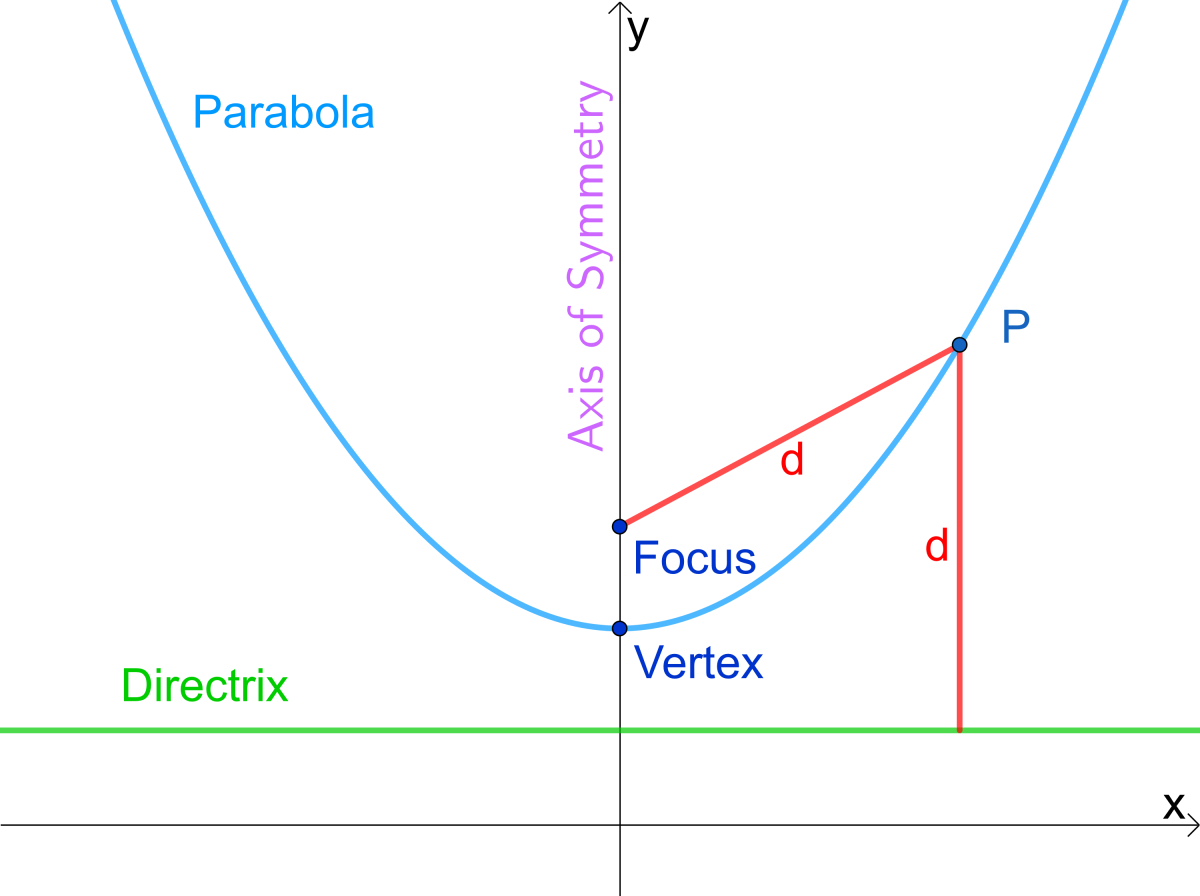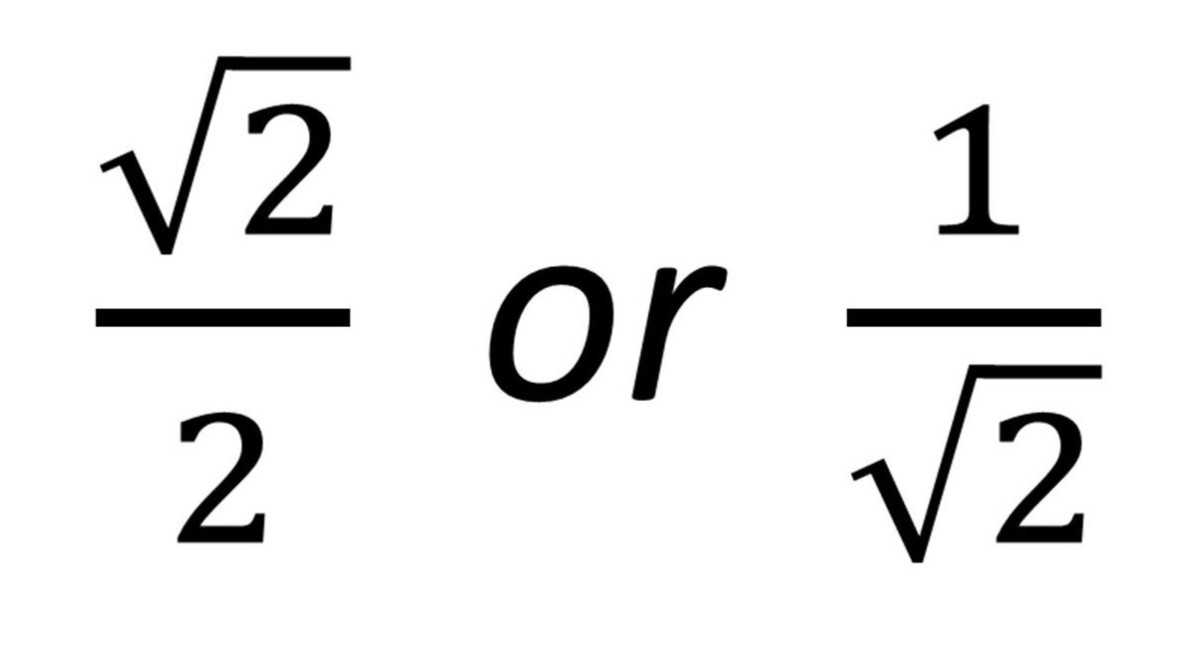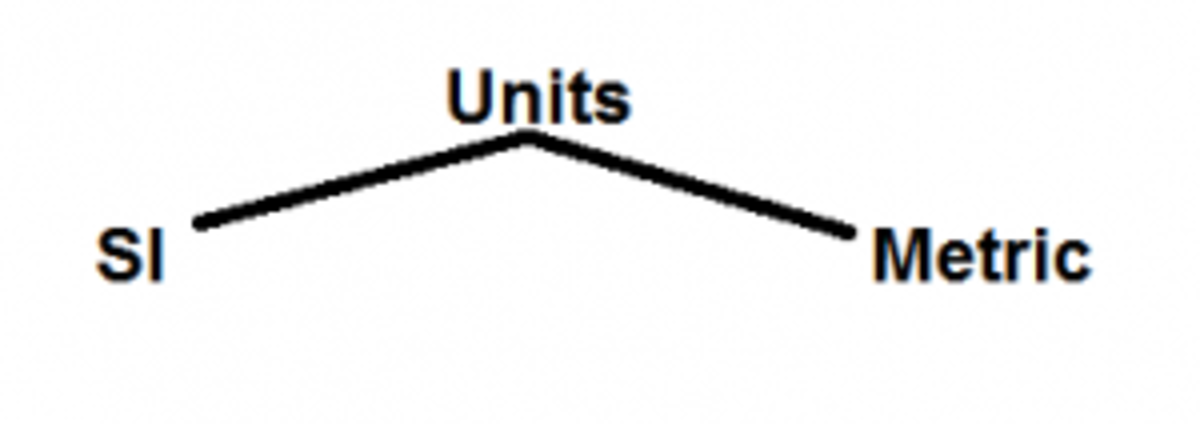How to Add and Subtract Fractions
A Common Denominator Makes the Process Easy
Adding and subtracting whole numbers or decimals is fairly straight forward and easy. However, when we get to fractions the it becomes more difficult. The reason for the difficulty is that each fraction consists of a numerator and a denominator as follows:
numerator / denominator
The rule for adding and/or subtracting fractions is to first make sure that the denominators are the same. If the denominators are the same, then we simply add or subtract the numerators, leaving the denominators untouched. This makes it easy if we have problems like:
1/3 + 1/3 = 2/3
or
7/8 - 2/8 = 5/8
What About Fractions with Different Denominators?
However, what do we do if we have problems like:
½ + ¾ ?
or
7/8 – 1/4?
We cannot proceed with adding or subtracting these because the denominators are different.
But, don't worry, there is a solution to this problem and that involves finding a common denominator for each of the fractions in the problems above.
How to Make the Denominators the Same
A common denominator is a denominator that each of the denominators in the problem can be divided into evenly.
In the case of ½ and ¾ the common denominator is 4 as both the 2 in ½ and the 4 in ¾ can be divided into that number.
We now change the 2 in ½ to a 4 and, since the 2 in ½ can be divided into 4 twice (4 ÷ 2 = 2) we multiply the numerator by 2 to get 2/4. Our formula is now:
2/4 + 3/4 = 5/4
Since the numerator is greater than the denominator, we reduce it, by dividing the denominator into the numerator to get 1 ¼.
Subtracting 1/4 from 7/8, which is our second problem, we find that the common denominator is 8 and, repeating the process described above, we get 7/8 – 2/8 = 5/8 as our answer.
What to Do if Neither Denominator is the Common Denominator?
In both examples above, one of the denominators turned out to be the common denominator.
However, what if neither denominator is the common denominator. Let's try this problem:
1/5 + 1/6
Here we find that the first number that each denominator can be evenly divided into is 30. Dividing the 5 in 1/5 into 30 we get 6.
Multiplying the the numerator, which is 1, by 6 we get 6/30.
We then divide the 6 in the second fraction into 30 and get 5.
Multiplying the numerator, which is 1 in this case also, by 5 we get 5/30.
With both denominators being the same (30) we can proceed to solve the problem as follows:
6/30 + 5/30 = 11/30.
Since there is no way to reduce this fraction, our answer is 11/30.
Try some yourself. You will find that this is actually quite easy.
Did you Find this Hub Helpful in Understanding Adding & Subtracting Fractions?
Links to My Other Hubs on Fractions
- How to Add a Fraction With a Different Denominator
While adding fractions with the same denominator is easy, adding fractions with different denominators can be a bit of a challenge. Here is a simple explanation and a practical application. - How To Add Mixed Fractions
Mixed fractions are fractions that accompany a whole number such as 1 1/2. Adding mixed fractions can be tricky unless one observes a couple of simple of rules. The process is described here.


